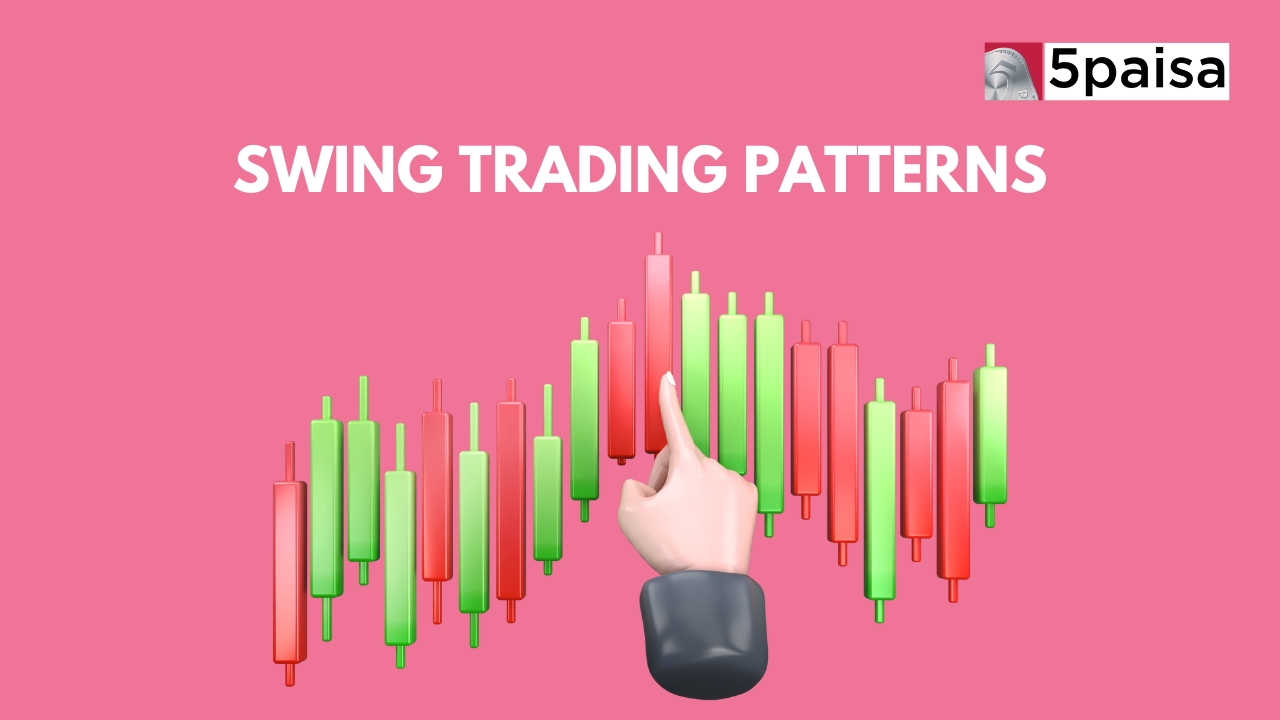Swing Trading Patterns

Last Updated: 8th May 2024 - 01:53 pm
Today, we're diving into swing trading patterns which are like roadmaps for finding good opportunities in the stock market. The goal is to consistently spot these patterns, judge if they're promising and time when to buy and sell just right.
But analyzing these patterns can be tricky especially for beginners. And even experienced traders spend a lot of time watching charts.
But what if there was an easier way to understand these patterns and make smart decisions? But first, let's get into the details of swing trading and chart patterns.
What is Swing Trading?
Swing trading means you buy a stock and hold onto it for a bit maybe a few days or a few weeks hoping to make money as its price goes up and down.
To decide which stocks to buy, you look at their price charts. For example, you might check out how TCS's stock price has changed over the past 6 months.
By studying these charts especially the recent ones you can spot patterns that suggest good times to buy or sell. Some patterns might suggest the price will go up while others suggest it might go down.
There are different patterns you can look for and learning about them helps you become a better swing trader.
What are Swing Trading Patterns?
Swing trading chart patterns are shapes or formations on stock charts that help swing traders spot potential opportunities in the market. These patterns are like road signs, guiding traders on when to buy or sell stocks to catch price swings. They also help determine if there's a good chance of making a profit or limiting losses.
The key is not just knowing when to enter or exit a trade but also understanding if the stock has enough potential for a profitable move. The best patterns not only predict price changes but also consider factors like trading volume and momentum direction indicating whether a stock is likely to keep going in its current direction which is where you can make money.
Best Chart Patterns for Swing Trading?
Most popular swing trading patterns include:
Wedge: This swing trading pattern happens when prices seem stuck in a triangle shape, getting squeezed into a narrower space. When the price breaks out of this triangle in one direction or another, it can signal a good time to start a swing trade.
Head and shoulders: This pattern in swing trading forms when a stock's price forms three peaks first a high peak or head then a lower one on the left or left shoulder and another lower peak on the right or right shoulder. The right shoulder is usually lower than the left making a shape like shoulders and a head. This pattern signals that the price will likely keep dropping so it's seen as a bearish sign.
Inverse head and shoulders: This pattern in swing trading is the opposite of the head and shoulders pattern and is seen as a positive sign. It forms when a security's price forms a low point or head then goes up to form a higher low or left shoulder and then another higher low or right shoulder. Usually, the right shoulder is higher than the left forming a shape that looks like an Inverse head and shoulders.
Double top: This pattern is created when a stock price hits a high point, goes down a bit then hits that same high point again. It's a sign that the price will probably keep dropping after the second peak.
Double bottom: This swing trading pattern is created when a security's price hits a low point, bounces back a bit and then goes back down to that same low point again. It's seen as a positive sign because it suggests the price will probably keep going up after hitting that low point for the second time.
Triple top: This swing trading pattern is created when a stock price reaches a high point, dips down and then hits that same high point two more times. It indicates that the price will probably keep dropping after the third peak so it's considered a bearish signal.
Triple bottom: This trading pattern forms when a security's price hits a low point bounces back, and then hits that same low point two more times. It indicates a positive sign because it suggests that the price will probably keep going up after the third low point.
Conclusion
Best way to figure out which patterns work best for you is to try out different combinations and see what fits your trading style. Once you find a swing trading chart pattern you like, you can use it to decide when to buy or sell a stock. Each pattern usually has a specific point where it suggests buying the stock.
But remember, no single chart pattern guarantees success. Always use other information like support and resistance levels, trend lines and moving averages to confirm your decision. Swing trading can be profitable but it comes with risks. Before you start understand these risks and have a plan to manage them.
- Flat ₹20 Brokerage
- Next-gen Trading
- Advance Charting
- Actionable Ideas
Trending on 5paisa
Disclaimer: Investment in securities market are subject to market risks, read all the related documents carefully before investing. For detailed disclaimer please Click here.
 5paisa Research Team
5paisa Research Team
 Sachin Gupta
Sachin Gupta